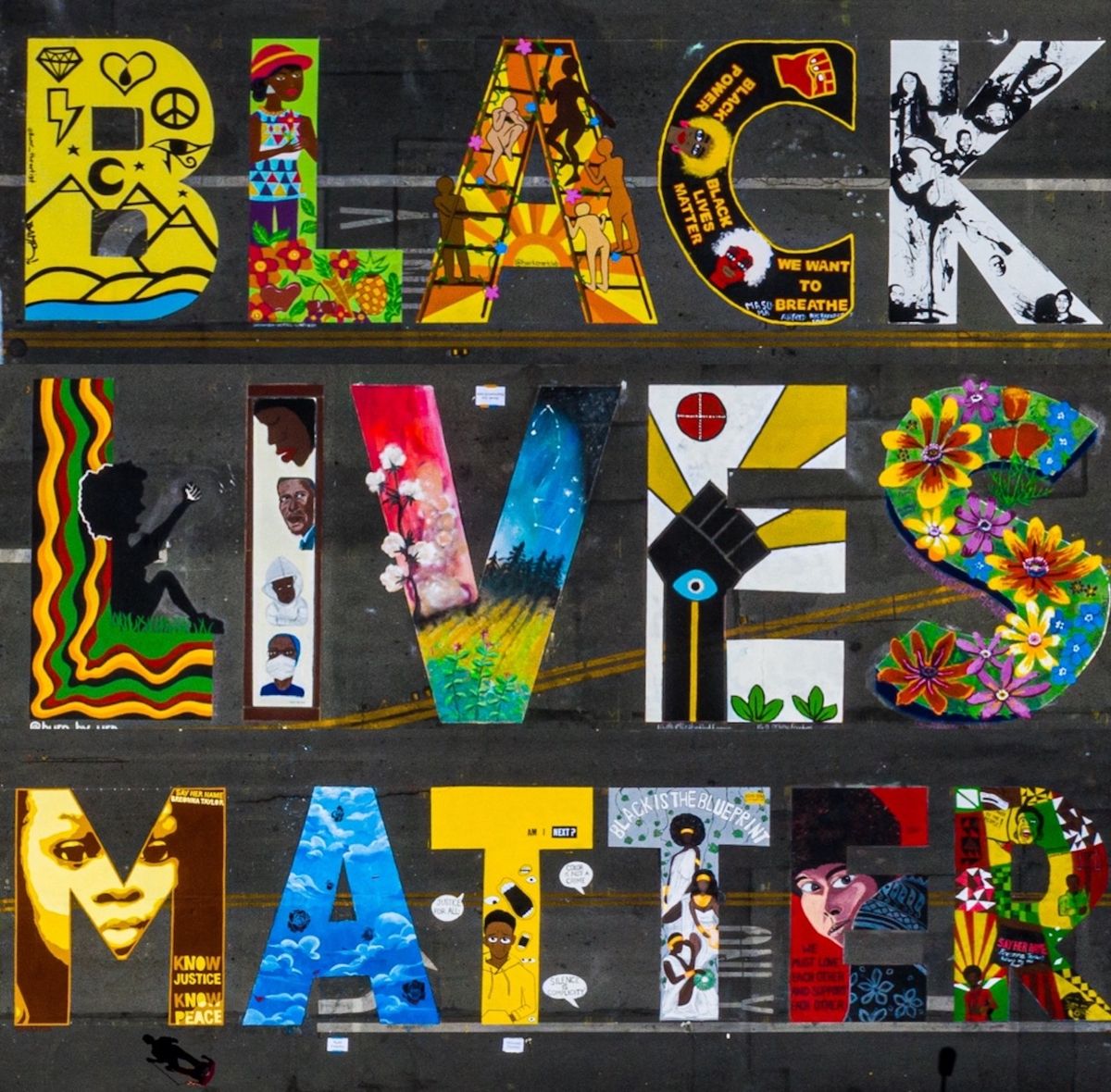A judge in California has quashed a lawsuit brought by six police officers over a Black Lives Matter mural, which they deemed offensive and discriminatory.
In a tentative ruling heard earlier this month, the Santa Clara County Superior Court Judge Socrates Peter Manoukian dismissed the suit, which sought damages for discrimination, harassment and retaliation in regard to 16 murals (spelling out “Black lives matter”) created by 16 artists on Hamilton Street in downtown Palo Alto, just outside city hall (and next to the police department).
The public artwork was commissioned in June 2021 by the city, in the wake of the killing of George Floyd by police in Minneapolis. It was not removed until November, despite concerns raised by the officers; Eric Figueroa, Michael Foley, Christopher Moore, Robert Parham, Julie Tannock and David Ferreria.
Having walked past the 245ft-long mural on a “daily basis”, the officers were concerned with its inclusion of an image of Joanne Chesimard (otherwise known as Assata Shakur), who was convicted in 1977 for the murder of New Jersey police officer Werner Foerster. They also perceived there to be a reference in the mural to the New Black Panthers, a group widely considered to be a hate group encouraging violence—although this reference has been denied by the artists involved.
Lawyers for the city argued that the work would not be offensive to a “reasonable person” and that there was no factual evidence of any adverse treatment in the workplace (such as being fired or demoted) after the officers raised their concerns to their superiors. The judge agreed that there was insufficient evidence to back the claim, which sought damages of over $25,000 and alleged workplace harassment.
Legal representatives from all parties were contacted but did not respond to our request for comment. It is unclear whether any further legal steps are being considered.
“Street art is expression in public space, and when it comes to BLM murals, of which there were dozens created across the US (and worldwide actually), the impression that the morals are sanctioned by the local government can lead to debates and conflicts over mural content,” says University of St. Thomas professor Todd Lawrence, who co-runs a project to catalogue and map anti-racist street art. “We should remember, however, that these murals are a kind of important expression from community members whose voices are often marginalised.”


